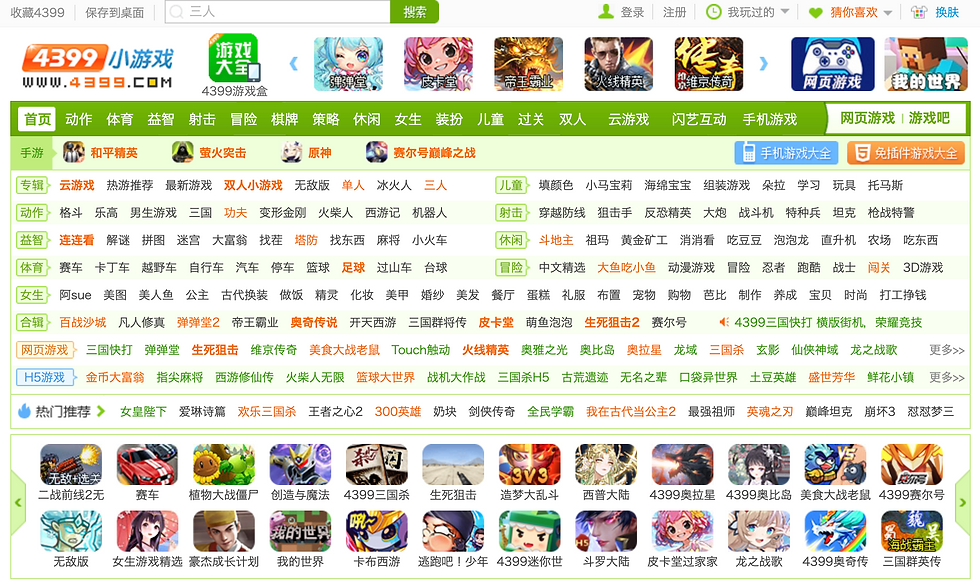- 7 days ago
SEO in Mainland China is an entirely different game than SEO on Google for other markets. If you’re looking to increase organic traffic from Chinese users, it’s essential to understand the local players, users’ search behaviours, and unique ranking factors for Chinese SEO. In this post, I will share the best practices to rank pages on Baidu, the “Chinese Google”, and address additional factors that may influence a website’s ranking.
What is Baidu?
The Great Firewall policy regulates the websites that users in China can access. Instead of Google, you’ll need to optimize your pages for local search engines such as Baidu, Sogou, and Shenma. The most popular is Baidu, with over 676 million daily active users in 2024, and 3.3 billion daily internet queries.

Chinese Hosting Server
Baidu is first and foremost a Chinese search engine, so it makes sense that its algorithm massively favours Chinese localization – whether it’s server location, top-level domain (.cn), business address, content language, or citations. Hosting your website locally will help Baidu index your content faster. Also, getting a domain name from a Chinese registrar will increase the credibility of your pages, as seen by Baidu.
Note that you are required to obtain an Internet Content Publishing (ICP) license before hosting your domain in China. This is a required authorization for international brands to operate a website legally in the Chinese market. Not only is it a legal requirement, but it also helps to build trust with local users.
There are some rumors that Baidu ranks sites with visible ICP licenses higher in rankings, but this has yet to be proven. Still, if you do get an ICP license, it can only be a potential benefit to display it on the footer of your site.
Keyword Ranking Tools for Baidu SEO
Third-party tools such as 5118, Ciku5, and Chinaz are available for Chinese keyword research. These are similar to the well-loved English SEO keyword tools such as ahrefs and SEMrush.
Like Google, Baidu also has built-in digital marketing tools that you can leverage for keyword research.
Baidu keyword planner, accessible through a Baidu PPC (Phoenix Nest manager) account, provides keywords and their search volumes, similar to Google’s keyword planner in Google Ads.
Baidu Index, Baidu’s Google Trend equivalent, helps you visualize keyword relevancy and popularity over time, often providing useful insights for SEO and keyword research.
In addition, these Baidu tools and properties will be useful for your overall SEO strategy.
Baidu Ziyuan (webmaster tools) can be used to track indexing issues and site performance, similar to Google Search Console. Note that a China business address may be required to submit your website to Baidu.
Baidu Tongji (Analytics), similar to Google Analytics, provides data on user behavior, traffic sources, and keyword effectiveness.
Baidu Zhidao is China’s largest Q&A forum, similar to Quora in English. As Baidu Zhidao often ranks high for search queries, it should be part of your Chinese digital marketing strategy.

If you're b2b, a channel that perfectly complements Baidu SEO is Baidu B2B. Debuted in October 2018, this specialized engine is a trusted source for product and service researching connecting verified B2B merchants with users. A key advantage of Baidu B2B is its prominent placement within Baidu's main search results, where it consistently appears for common industry-related queries. This high visibility makes it an effective tool for capturing potential customers in the initial research phase of their buyer's journey, connecting their search intent directly with your offering. Businesses can access Baidu B2B through two primary methods: securing an annual membership at RMB ¥6,980, running ad listings via the Baidu advertising platform.
Website Localization
Chinese search engines do not favor non-Chinese websites or content that is irrelevant to the local market. Note that Baidu is predominantly available in simplified Chinese, which is typically used in mainland China, Singapore, and Malaysia. Traditional Chinese, used in Taiwan, Hong Kong, and Macau, is supported on Baidu, but the platform is programmed for simplified Chinese, and often converts traditional to simplified Chinese.
Website Design
Why do Chinese (and Japanese) websites seem so messy and cluttered compared to English ones? The homepage of 4399, an online gaming company, is a prime example.

Chinese websites often try to display as much content as possible on the homepage. This minimizes the need to type Chinese characters in a search bar, which can be more cumbersome for users than clicking around. However, more and more web developers nowadays are favoring simplistic and minimalist designs. This trend is especially growing among younger generations.





